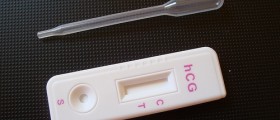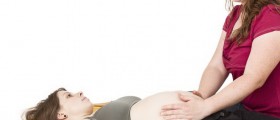
Almost every woman has some physical ovulation symptoms, although they may not be aware of them if they do not know what they are looking for. Pain and abdominal pressure during ovulation is one of these small but obvious ways many women can use to tell when they are fertile.
During ovulation, one egg is released from one ovary (on one side of the abdomen). Because of this, women who experience what is sometimes described as ovulation pain may notice the sensation of slight pressure or pain on either the right or left side of their lower abdomen. This indicates not only that you are ovulating, but even on what side you are ovulating.
According to medical estimates, around one fifth of all women of reproductive age can feel their ovulation because they experience distinct but mild lower abdominal discomfort during this time. For some of these women who do feel ovulation pain or cramping, the feeling is prominent and hard to ignore. Others only have a slight sensation, and can only feel their ovulation if they play close attention.
Sometimes, tracking your menstrual cycle through means like an ovulation calendar or charting to conceive using basal body temperature can fill in the missing pieces of the puzzle and inform you that the pain and abdominal pressure you are feeling are actually caused by an egg being released from your ovary.
Ovulation pain is not normally a cause for concern, and does not in itself indicate the presence of a medical problem. To the contrary, pain and abdominal pressure during ovulation are a useful tool to let you know when you should be having intercourse, if you are trying to get pregnant. If you are trying to avoid pregnancy, this ovulation symptom can give you useful information as well.
And for those women of reproductive age who do not have any ovulation pain or pressure, there may be other symptoms that point to the idea that they have entered their so-called fertile window. Egg white and runny cervical mucus, a slightly bloated abdomen, and tender breasts (which many women also experience during their period) are among the most common signs women will notice around the time of their ovulation. Some will even claim to have light vaginal spotting as they ovulate.
- www.betterhealth.vic.gov.au/health/conditionsandtreatments/ovulation-pain
- www.nhs.uk/conditions/ovulation-pain/
- Photo courtesy of MabelAmberu00ae ***Pluto5339***Queen Empath by Flickr: www.flickr.com/photos/mabelia/29233667455/

















Your thoughts on this
Loading...